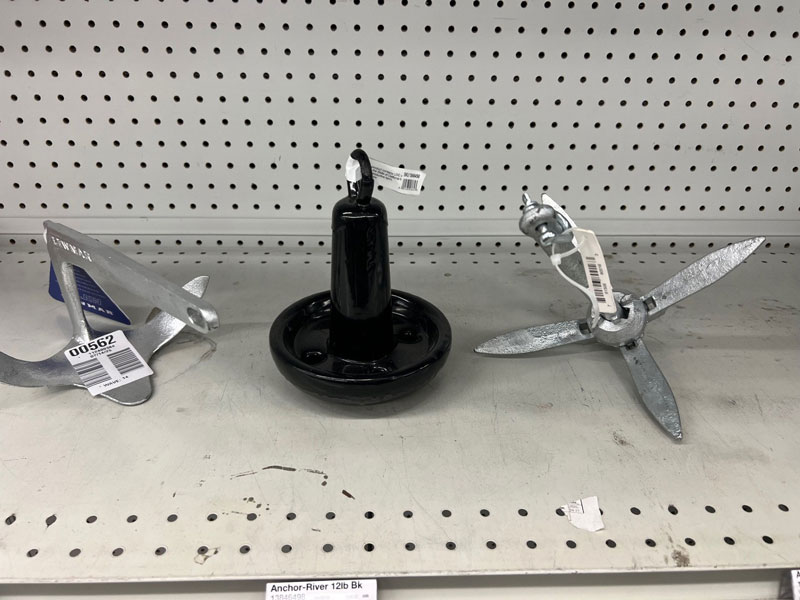Don’t get weighed down worrying about anchors, there are plenty of options on the market to hold you in place. I don’t usually carry an anchor onboard because it adds weight and takes up space, but that doesn’t mean I won’t use one when needed. For example, when blue catfish fishing on the upper Patuxent River with cut bait, I don’t want to move with the current. I want to remain in place and cast down river, usually into a deeper hole that is holding fish, so, I’ll deploy an anchor to hold my kayak in place. But there are different anchors that work best for different purposes when kayak fishing.

Many anchors that are on the market for kayakers are of the grapnel style. They store away closed but when deployed they are opened to grip mud or sand bottoms. But in a fishery with a snaggy bottom, a grapnel style can be next to impossible to retrieve. Mushroom style anchors are easier to retrieve, and you can use a Bruce/claw style of anchor in these scenarios too. In low current and light winds simply dropping a length of chain works well, and it costs a lot less than what you might spend on an anchor, which can range up to $100.
Some kayakers will use a trolley system with their anchor. This allows for deployment and adjustment of the anchor without leaving your seat. They are mounted on the gunwales with a cord and pulley system so you can adjust your anchor’s position anywhere from bow to stern. A trolley system will cost you from $30 up to $130 and installation is not included.
In shallow water situations you may want to use a stake out pole rather than an anchor. They are typically used in water less than six feet deep. One advantage of a stake out pole is that once deployed there is no drift, unlike an anchor that may not grab immediately and allow you to drift into the area you intended to fish. Another advantage of a stake out pole is that it can be used as a push pole to move quietly along while hunting tailing reds or stalking speckled trout along a grass line. Simply turn the pole around and use the T-handle to push along the bottom. They typically come in a seven- or eight-foot length, some longer too. Stake out poles can also be used as a shore stake anchor. A stake out pole will cost you from $70 up to $160.
A more advanced stake out pole of sorts is a Micro Power Pole, which is normally mounted on the stern of the kayak and operated with a wireless remote. You simply activate the system and the spike deploys and holds you in place. To move on, raise the stake with your remote and you are off and running. These may be hassle-free, but they certainly aren’t cost free with a price tag of $599 to $799. This does not include the spike or the power supply.
Brush grippers are another option that works well in some situations. They work by using a cord which is attached to the kayak and a grip that can be affixed to items such as tree branches, docks, or stumps. The cord applies additional gripping action as your kayak pulls against it. Brush grippers cost from $13 to $20.
If you are an avid kayak angler you may already know what anchor system suits your needs, but if you’re new to the sport you may want to take a few outings before picking an anchoring system. Thay way, you’ll have a good understanding of what you need and make the right choice from the start.
-By Eric Packard